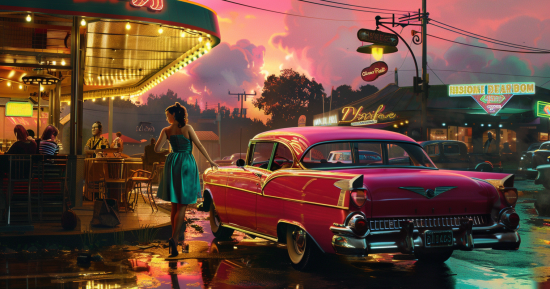Spring art captures the renewal and vibrancy of nature, inviting you to experience the magic of the season through a painter’s brush. Famous works like Sandro Botticelli’s Primavera express the joy and beauty of spring, bringing a sense of rejuvenation and warmth to any viewer. Whether it’s the elegant dance of mythological figures or the soft unfolding of blossoms, springtime in art has inspired countless artists throughout history.
Spring Art Painting
From the lush depictions in Pierre-Auguste Cot’s Springtime to the vibrant landscapes of Pierre Bonnard, artists have embraced the season’s fertility, growth, and love themes. Each brushstroke adds a touch of life and vitality, celebrating the transformation springtime heralds after the long winter months.
Spring’s influence on art spans eras and styles, from the intricate scenes of the Renaissance to the lively colors of Post-Impressionism. As you explore these masterpieces, you’ll uncover how different artists across time have uniquely interpreted the season’s essence, offering a fresh perspective that urges you to see spring anew.
Exploring Spring Themes in Art
Symbolism of Spring
Spring is frequently symbolized as a time of rebirth and renewal. In art, it represents new beginnings and the awakening of nature. Artists often depict spring using blossoming flowers, butterflies, and young animals to illustrate the season’s vitality. These symbols are used to convey themes of growth and transformation.
In Renaissance art, spring is often represented through allegories and classical mythology. Botticelli’s “Primavera” is a prominent example where spring is depicted using classical figures and lush gardens. This portrayal reflects life’s beauty and cyclical nature, as characters embody fertility and abundance. Artists continue to use these motifs across various styles and eras, emphasizing their timeless resonance.
Color Palettes and Moods
The color palette in spring-themed art pieces is typically lively and bright, capturing the season’s essence. You will often see abundant greens, yellows, and pastel shades that mirror blooming flora and clear skies. These colors help create a fresh and uplifting mood, inviting viewers to experience the renewal associated with spring.
Impressionist artists like Monet captured spring’s vibrancy through the playful use of light and color. His paintings, filled with soft pinks and blues, exemplify how light changes in spring, making scenes more dynamic. While traditional art favors pastels and soft tones, modern interpretations might employ bold and abstract color applications, offering a contemporary take on this classic season.
Techniques for Spring Art Painting
Impressionist Styles
Impressionist painting is all about capturing the fleeting beauty of spring. You focus on the overall mood rather than precise details. Try using broad brushstrokes to convey motion and the play of sunlight in scenes filled with flowers or greenery.
Color blending is key in this style. Use complementary colors to add vibrancy to your paintings. A technique you might find helpful is scumbling, where you layer dry paint over wet for a soft texture. This can create the shimmering effect of sunlight dancing across a field of blooms.
Modern Interpretations
Modern art techniques allow you to bring a fresh perspective to spring themes. Consider incorporating abstract elements to get a contemporary flair to your work. Focus on geometric shapes or bold colors to create striking compositions.
Experiment with mixed media by combining acrylics with textiles or papers. This can add depth and interest to your paintings. This technique offers the fun of playing with texture and color, giving traditional spring motifs a fresh and unique appearance.
Capturing Light and Bloom
Capturing the essence of spring light requires attention to both highlights and shadows. Use a light color palette to reflect natural spring lighting. Think pastels and crisp whites to illustrate airy, sunlit scenes.
When painting florals, consider how light interacts with different petals and leaves. You can use techniques such as glazing and applying thin layers of translucent paint to achieve luminous depth. This method helps emphasize the delicate and transient nature of spring blooms, making them almost lifelike.
Frequently Asked Questions – Spring Art Painting
What are some popular themes for spring-themed artwork?
Spring-themed artwork often features blossoming flowers, green landscapes, and the awakening of nature. Vibrant and uplifting colors dominate, capturing the essence of renewal and growth. Artists might focus on scenes like gardens in bloom or trees sprouting new leaves.
Where can one find spring art paintings for purchase?
You can find spring art paintings at online art galleries, local art fairs, and through individual artist websites.
Can you suggest some easy spring painting ideas for beginners?
Painting simple floral scenes or landscapes can be an excellent start for beginners. Try creating a field of daisies or a single cherry blossom branch. Using bold pastels and soft brush strokes can help capture the gentle vibrancy of spring.





